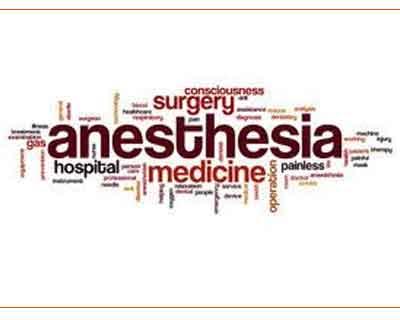- Home
- Editorial
- News
- Practice Guidelines
- Anesthesiology Guidelines
- Cancer Guidelines
- Cardiac Sciences Guidelines
- Critical Care Guidelines
- Dentistry Guidelines
- Dermatology Guidelines
- Diabetes and Endo Guidelines
- Diagnostics Guidelines
- ENT Guidelines
- Featured Practice Guidelines
- Gastroenterology Guidelines
- Geriatrics Guidelines
- Medicine Guidelines
- Nephrology Guidelines
- Neurosciences Guidelines
- Obs and Gynae Guidelines
- Ophthalmology Guidelines
- Orthopaedics Guidelines
- Paediatrics Guidelines
- Psychiatry Guidelines
- Pulmonology Guidelines
- Radiology Guidelines
- Surgery Guidelines
- Urology Guidelines
Standard Treatment Guidelines for Optimal Goals for Anesthesia Care in Obstetrics

In the practice of medicine (especially surgery and dentistry), anesthesia or anaesthesia is a state of temporary induced loss of sensation or awareness. It may include analgesia (relief from or prevention of pain), paralysis (muscle relaxation), amnesia (loss of memory), or unconsciousness. A patient under the effects of anesthetic drugs is referred to as being anesthetized.
American Society of Anesthesiologists has issued the Standard Treatment Guidelines for Optimal Goals for Anesthesia Care in Obstetrics. Following are the major recommendations:
Committee of Origin: Obstetric Anesthesia
(Approved by the ASA House of Delegates on October 17, 2007, and last amended on October 26, 2016)
ABSTRACT: Good obstetric care requires the availability of qualified personnel and equipment to administer general or neuraxial anesthesia. The extent and degree to which anesthesia services are available varies widely among hospitals. However, for any hospital providing obstetric care, certain optimal anesthesia goals should be sought. These include:
- Availability of a licensed practitioner who is credentialed to administer an appropriate anesthetic whenever necessary. For many women, neuraxial anesthesia (epidural, spinal, or combined spinal epidural) will be the most appropriate anesthetic.
- Availability of a licensed practitioner who is credentialed to maintain support of vital functions in any obstetric emergency.
- Availability of anesthesia and surgical personnel to permit the start of a cesarean delivery in a timely manner in accordance with clinical needs and local resources.
- Because the risks associated with trial of labor after cesarean delivery (TOLAC) and uterine rupture may be unpredictable, the immediate availability of appropriate facilities and personnel, (including obstetric anesthesia; nursing personnel; and a physician capable of monitoring labor and performing cesarean delivery, including an emergency cesarean delivery) is optimal. When resources for immediate cesarean delivery are not available, patients considering TOLAC should discuss the hospital's resources and availability of obstetric, anesthetic, pediatric, and nursing staff with their obstetric provider (1); patients should be clearly informed of the potential increase in risk and the management alternatives. The definition of immediately available personnel and facilities remains a local decision based on each institution's available resources and geographic location.
- Appointment of a qualified anesthesiologist to be responsible for all anesthetics administered. There are many obstetric units where physicians or physician-supervised nurse anesthetists administer labor anesthetics. The administration of general or neuraxial anesthesia requires both medical judgment and technical skills. Thus, a physician with privileges in anesthesiology should be readily available.
Persons administering or supervising obstetric anesthesia should be qualified to manage the infrequent but occasionally life-threatening complications of neuraxial anesthesia, such as respiratory and cardiovascular failure, toxic local anesthetic convulsions, or vomiting and aspiration. Mastering and retaining the skills and knowledge necessary to manage these complications requires adequate training and frequent application.
To ensure the safest and most effective anesthesia for obstetric patients, the physician Director of Anesthesia Services, with the approval of the medical staff, should develop and enforce written policies regarding provision of obstetric anesthesia. These include:
- A qualified physician with obstetric privileges to perform operative vaginal or cesarean delivery who concurs with the patient's management and has knowledge of the maternal and fetal status and progress of labor should be readily available during administration of anesthesia. Readily available should be defined by each institution within the context of its resources and geographic location. Neuraxial and/or general anesthesia should not be administered until the patient has been examined and the fetal status and progress of labor evaluated by a qualified individual.
- Availability of equipment, facilities, and support personnel equal to that provided in the surgical suite. This should include the availability of a properly equipped and staffed recovery room capable of receiving and caring for all patients recovering from neuraxial or general anesthesia. Birthing facilities, when used for labor anesthesia services or surgical anesthesia, must be appropriately equipped to provide safe anesthetic care during labor and delivery or postanesthesia recovery care.
- Personnel, other than the surgical team, should be immediately available to assume care of the newborn. The obstetrical provider and anesthesiologist are responsible for the mother and may not be able to leave her to care for the newborn.
In larger maternity units and those functioning as high-risk centers, 24-hour in-house anesthesia, obstetric and neonatal specialists are usually available. Preferably, the obstetric anesthesia services should be directed by an anesthesiologist with special training or experience in obstetric anesthesia. These units will also frequently require the availability of more sophisticated monitoring equipment and specially trained nursing personnel.
Finally, good interpersonal relations between obstetric providers and anesthesiologists are important. Joint meetings between the two departments should be encouraged. Anesthesiologists should recognize the special needs and concerns of obstetric providers, who in turn should recognize the anesthesiologist as a consultant in the management of pain and life-support measures. Both should recognize the need to provide high quality care for all patients.

Disclaimer: This site is primarily intended for healthcare professionals. Any content/information on this website does not replace the advice of medical and/or health professionals and should not be construed as medical/diagnostic advice/endorsement or prescription. Use of this site is subject to our terms of use, privacy policy, advertisement policy. © 2020 Minerva Medical Treatment Pvt Ltd